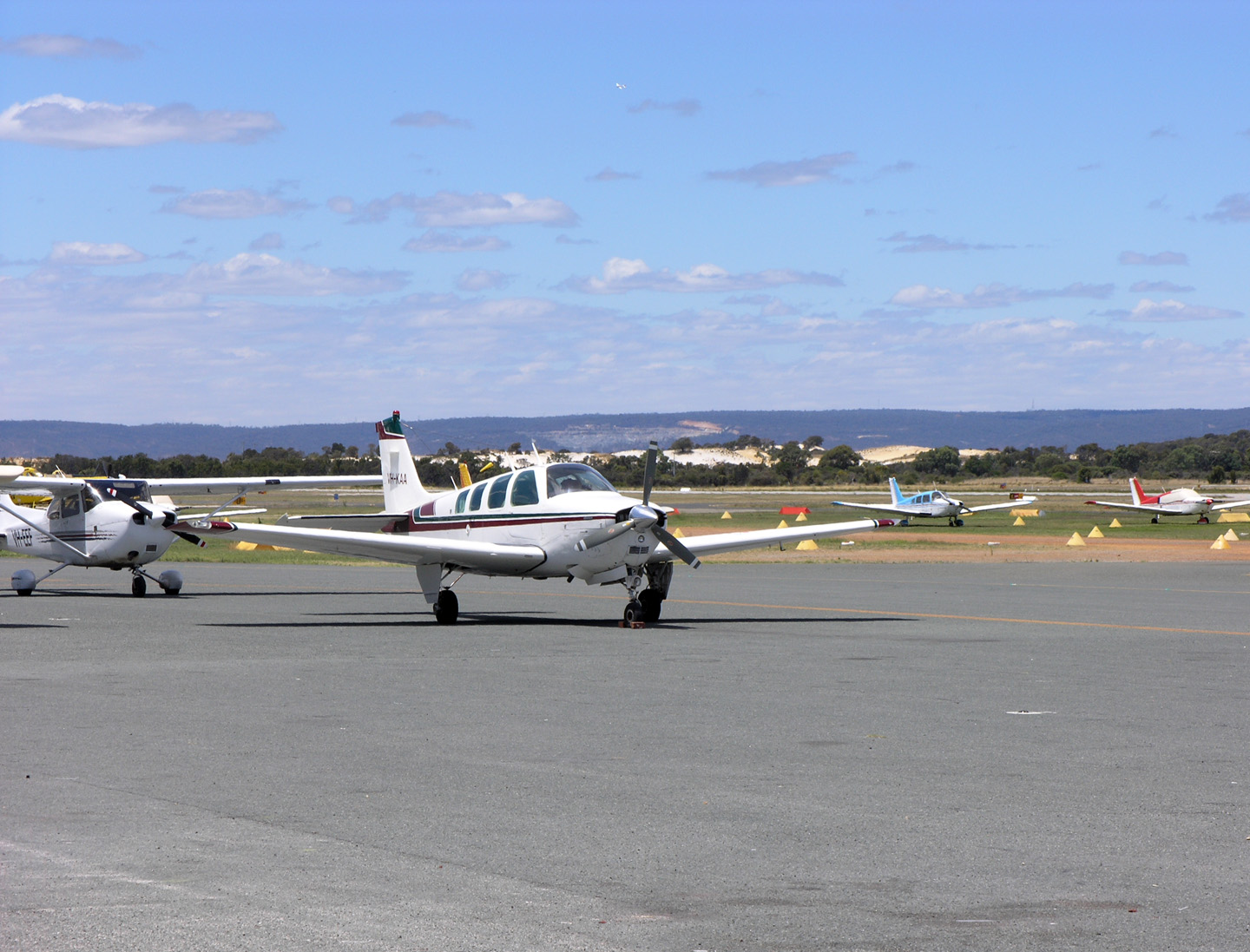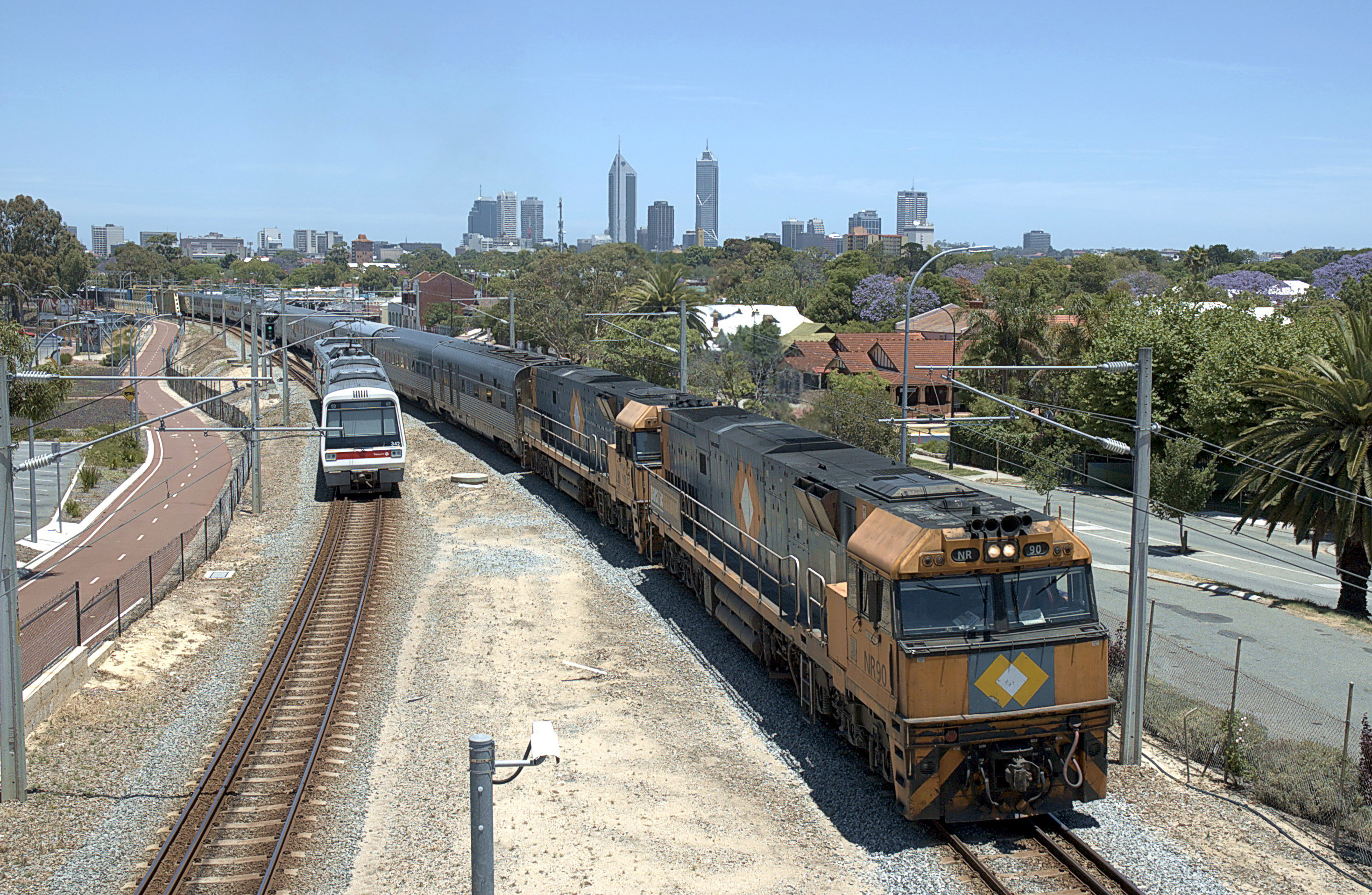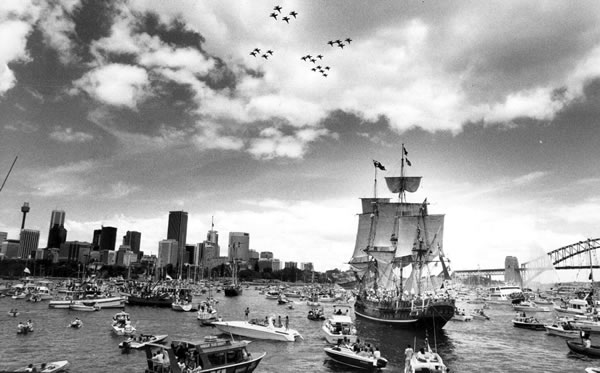|
WAGR Dd Class
The WAGR Dd class was a class of 4-6-4T tank locomotive operated by the Western Australian Government Railways (WAGR) between 1946 and 1972. History The Dd type was an evolution of the Dm class. However unlike the Dm class which used components of the old E Class tender engines, the Dd class components were all new. All were built at the Midland Railway Workshops entering service between April and November 1946. They were built to haul suburban passenger services in Perth, although they did on occasions work to Bunbury on the South Western and Merredin on the Eastern lines. The first were withdrawn in 1969, with the remainder in 1970/71 following the entry into service of the ADK/ADB class diesel multiple units. Preservation Two have been preserved: *Dd592 was preserved by the Australian Railway Historical Society in July 1972. In May 1984, Westrail commenced work at Midland Railway Workshops to restore it to operational condition as a Bicentennial project. It returned to s ... [...More Info...] [...Related Items...] OR: [Wikipedia] [Google] [Baidu] |
Jandakot, Western Australia
Jandakot is a southern suburb of Perth, Western Australia, located within the City of Cockburn local government area. It is best known for Jandakot Airport that is situated entirely within the suburb, the airport being "the busiest general aviation airport in Australia in terms of aircraft movements", the sixth-busiest civilian airport in Australia in the fiscal year ending 30 June 2018, and in the 2011 fiscal year even the busiest civilian airport in Australia. History Jandakot was originally named after Lake Jandakot, which was renamed lake Forrestdale in 1973. Maps of the Swan River Colony produced in the early 1830s show a lake of vast extent situated south west of Kelmscott. The name of the first European to find the lake remains unknown but, in February 1833, Surveyor-General Septimus Roe found the size of the lake had been greatly exaggerated. It became well known as a watering place on the original track between the Canning River and Pinjarra and in 1844 its Abori ... [...More Info...] [...Related Items...] OR: [Wikipedia] [Google] [Baidu] |
Eastern Railway (Western Australia)
The Eastern Railway is the main railway route between Fremantle and Northam in Western Australia. It opened in stages between 1881 and 1893. The line continues east to Kalgoorlie as the Eastern Goldfields Railway. Initial section The first sod of the Fremantle-Guildford Railway was turned by Governor Ord at Guildford on 3 June 1879. The event coincided with the celebration of the 50th anniversary of settlement of Western Australia. The alignment of this first section of the railway has remained generally unchanged since it opened on 1 March 1881 and now forms part of Transperth's Fremantle Line and Midland Line. Notable changes to this section include: * Electrification of the Perth suburban rail network in 1991 * Sinking of Subiaco station in 1998 as part of Subi Centro * Sinking of the line through the former Perth Yards as part of Perth City Link The centenary of the railway was celebrated on 1 March 1981. First route The ''First Route'', from to , was opened on ... [...More Info...] [...Related Items...] OR: [Wikipedia] [Google] [Baidu] |
3 Ft 6 In Gauge Locomotives Of Australia
3 (three) is a number, numeral and digit. It is the natural number following 2 and preceding 4, and is the smallest odd prime number and the only prime preceding a square number. It has religious or cultural significance in many societies. Evolution of the Arabic digit The use of three lines to denote the number 3 occurred in many writing systems, including some (like Roman and Chinese numerals) that are still in use. That was also the original representation of 3 in the Brahmic (Indian) numerical notation, its earliest forms aligned vertically. However, during the Gupta Empire the sign was modified by the addition of a curve on each line. The Nāgarī script rotated the lines clockwise, so they appeared horizontally, and ended each line with a short downward stroke on the right. In cursive script, the three strokes were eventually connected to form a glyph resembling a with an additional stroke at the bottom: ३. The Indian digits spread to the Caliphate in the 9th ... [...More Info...] [...Related Items...] OR: [Wikipedia] [Google] [Baidu] |
Steam Locomotives Of Western Australia
Steam is a substance containing water in the gas phase, and sometimes also an aerosol of liquid water droplets, or air. This may occur due to evaporation or due to boiling, where heat is applied until water reaches the enthalpy of vaporization. Steam that is saturated or superheated is invisible; however, "steam" often refers to wet steam, the visible mist or aerosol of water droplets formed as water vapor condenses. Water increases in volume by 1,700 times at standard temperature and pressure; this change in volume can be converted into mechanical work by steam engines such as reciprocating piston type engines and steam turbines, which are a sub-group of steam engines. Piston type steam engines played a central role in the Industrial Revolution and modern steam turbines are used to generate more than 80% of the world's electricity. If liquid water comes in contact with a very hot surface or depressurizes quickly below its vapor pressure, it can create a steam explosion. Types ... [...More Info...] [...Related Items...] OR: [Wikipedia] [Google] [Baidu] |
Railway Locomotives Introduced In 1946
Rail transport (also known as train transport) is a means of transport that transfers passengers and goods on wheeled vehicles running on rails, which are incorporated in tracks. In contrast to road transport, where the vehicles run on a prepared flat surface, rail vehicles (rolling stock) are directionally guided by the tracks on which they run. Tracks usually consist of steel rails, installed on sleepers (ties) set in ballast, on which the rolling stock, usually fitted with metal wheels, moves. Other variations are also possible, such as "slab track", in which the rails are fastened to a concrete foundation resting on a prepared subsurface. Rolling stock in a rail transport system generally encounters lower frictional resistance than rubber-tyred road vehicles, so passenger and freight cars (carriages and wagons) can be coupled into longer trains. The operation is carried out by a railway company, providing transport between train stations or freight customer facil ... [...More Info...] [...Related Items...] OR: [Wikipedia] [Google] [Baidu] |
List Of Western Australian Locomotive Classes
This is a list of Western Australian locomotive classes, being classes of locomotive that have worked on railways in Western Australia. The majority of Western Australian steam locomotive classes were operated by the Western Australian Government Railways (WAGR). Regularly scheduled steam working ceased on WAGR mainline operations after 1971 - with only special excursion or enthusiasts trains being hauled by steam after that time. Other significant operators include the Commonwealth Railways, the Midland Railway Company of Western Australia and State Saw Mills. Many private organisations also operated steam locomotives in Western Australia. Locomotives Western Australian Government Railway Midland Railway Company of Western Australia (In order of introduction on the Midland railway.) Commonwealth Railways Other Diesel locomotives BHP (In order of introduction on the Goldsworthy and Mount Newman railways.) * CM39-8 * CM40-8M * CM40-8 * GE AC6000CW * EMD S ... [...More Info...] [...Related Items...] OR: [Wikipedia] [Google] [Baidu] |
Rail Transport In Western Australia
Railways in Western Australia were developed in the 19th century both by the Government of Western Australia and a number of private companies. Today passenger rail services are controlled by the Public Transport Authority (a department of the Government of Western Australia) through Transperth, which operates public transport in Perth, and Transwa, which operates country passenger services. Great Southern Rail operates the ''Indian Pacific''. The interstate standard gauge line east from Kalgoorlie is owned by the Australian Rail Track Corporation, with most other lines leased by the state to Arc Infrastructure. Freight rail was privatised in 2000. General intrastate freight is mainly operated by Aurizon, while grain traffic is also operated by Aurizon under contract to the CBH Group. Interstate traffic is operated by Pacific National and SCT Logistics. Aurizon also operate an interstate mineral sands service to Kwinana from Broken Hill for Tronox. A number of private iron or ... [...More Info...] [...Related Items...] OR: [Wikipedia] [Google] [Baidu] |
Gosnells, Western Australia
Gosnells is a suburb located within the City of Gosnells. Gosnells is approximately south-east of the Perth central business district. It contains the Gosnells town centre which includes the Council offices, library and the Gosnells Railway Station. History The area where Gosnells is located was used by the Nyoongar Aboriginal people for thousands of years before European settlement. In 1829, when the European settlers arrived in Western Australia, farms were established along the Swan and Canning Rivers, significantly changing the landscape and terrain of Gosnells. In 1862, Charles Gosnell of London purchased the surrounding lands of Gosnells from the Davis Family. In 1890, Western Australia experienced an influx of residents from overseas and interstate due to the gold rush in Kalgoorlie and Coolgardie. This resulted in an increased demand for land on the outskirts of Perth and subsequently a group of developers bought the land (named "Canning Location 16") from the dece ... [...More Info...] [...Related Items...] OR: [Wikipedia] [Google] [Baidu] |
Western Australian Rail Transport Museum
The Railway Museum, also known as the Rail Transport Museum, is situated in Bassendean, Western Australia. It is run by the Western Australian division of the Australian Railway Historical Society (ARHS), which is called Rail Heritage WA. In the early days of operation it had in places been known as the ''Western Australian Rail Transport Museum'', and more recently, ''Rail Transport Museum''. On the internet and social media, it has been referred in variants with qualifiers of the location name such as the ''Bassendean Rail Museum'' and ''Rail Heritage Museum Bassendean''. The standard name is currently utilised as the ''Railway Museum''. Collection It has the most comprehensive collection of heritage steam locomotives and rolling stock in Western Australia. It was originally developed in 1969, and officially opened in November 1974 by the Western Australian Minister for Transport Ray O'Connor. ::Diesel Locomotives ::Steam Locomotives - include representatives of most cla ... [...More Info...] [...Related Items...] OR: [Wikipedia] [Google] [Baidu] |
Australian Bicentennary
The bicentenary of Australia was celebrated in 1988. It marked 200 years since the arrival of the First Fleet of British convict ships at Sydney in 1788. History The bicentennial year marked Captain Arthur Phillip's arrival with the 11 ships of the First Fleet in Sydney Harbour in 1788, and the founding of the city of Sydney and the colony of New South Wales. 1988 is considered the official bicentenary year of the founding of Australia. Celebrations The Australian Bicentenary was marked by pomp and ceremony across Australia to mark the anniversary of the arrival of the First Fleet of British ships at Sydney in 1788. The Australian Bicentennial Authority (ABA), pursuant to the Australian Bicentennial Authority Act 1980, was set up to plan, fund and coordinate projects that emphasized the nation's cultural heritage. State Councils were also created to ensure cooperation between the federal and state governments. The result was a national programme of events and celebr ... [...More Info...] [...Related Items...] OR: [Wikipedia] [Google] [Baidu] |
Westrail
Western Australian Government Railways (WAGR) was the operator of railway services in the state of Western Australia between October 1890 and June 2003. Owned by the state government, it was renamed a number of times to reflect extra responsibility for tram and ferry operations that it assumed and later relinquished. Westrail was the trading name of WAGR from September 1975 until December 2000, when the WAGR's freight division and the Westrail name and logo were privatised. Its freight operations were privatised in December 2000 with the remaining passenger operations transferred to the Public Transport Authority in July 2003. History of operations The WAGR had its origins in 1879, when the Department of Works & Railways was established. The first WAGR line opened on 26 July 1879 between Geraldton and Northampton. It was followed by the Eastern Railway from Fremantle to Guildford via Perth on 1 March 1881. The WAGR adopted the narrow gauge of to reduce construction co ... [...More Info...] [...Related Items...] OR: [Wikipedia] [Google] [Baidu] |
ADK/ADB Class Diesel Multiple Unit
The ADK class are a class of diesel multiple units that were previously operated by Western Australian Government Railways (WAGR) in Perth, and later Transdev Auckland on Auckland's suburban rail network, and are currently operated by MetroBus in Maputo, Mozambique. Originally built by Commonwealth Engineering and the Midland Railway Workshops for WAGR in the late 1960s, all but one were sold in 1993 to New Zealand Rail, and were then owned by Auckland Transport. The units were completely withdrawn from service in New Zealand on 5 December 2014, following completion of electrification of Auckland's network. History In 1967 and 1968, ten two-carriage stainless steel sets were manufactured for the Western Australian Government Railways. Each set consisted of an ADK power car manufactured by Commonwealth Engineering, and an ADB trailer built by the WAGR's Midland Railway Workshops. The ADK cars were manufactured in Granville and railed via Melbourne and Adelaide requiring a ch ... [...More Info...] [...Related Items...] OR: [Wikipedia] [Google] [Baidu] |




